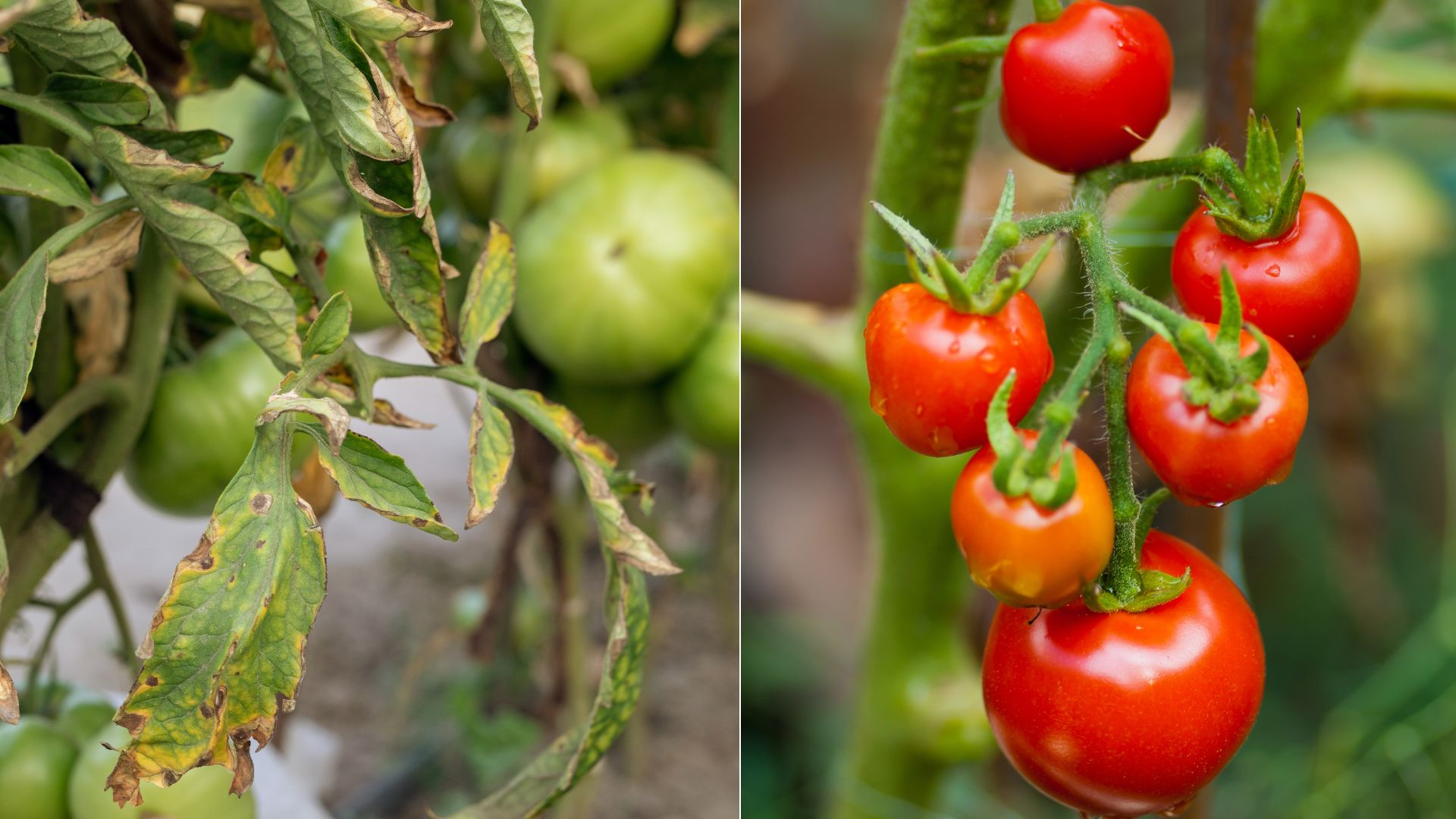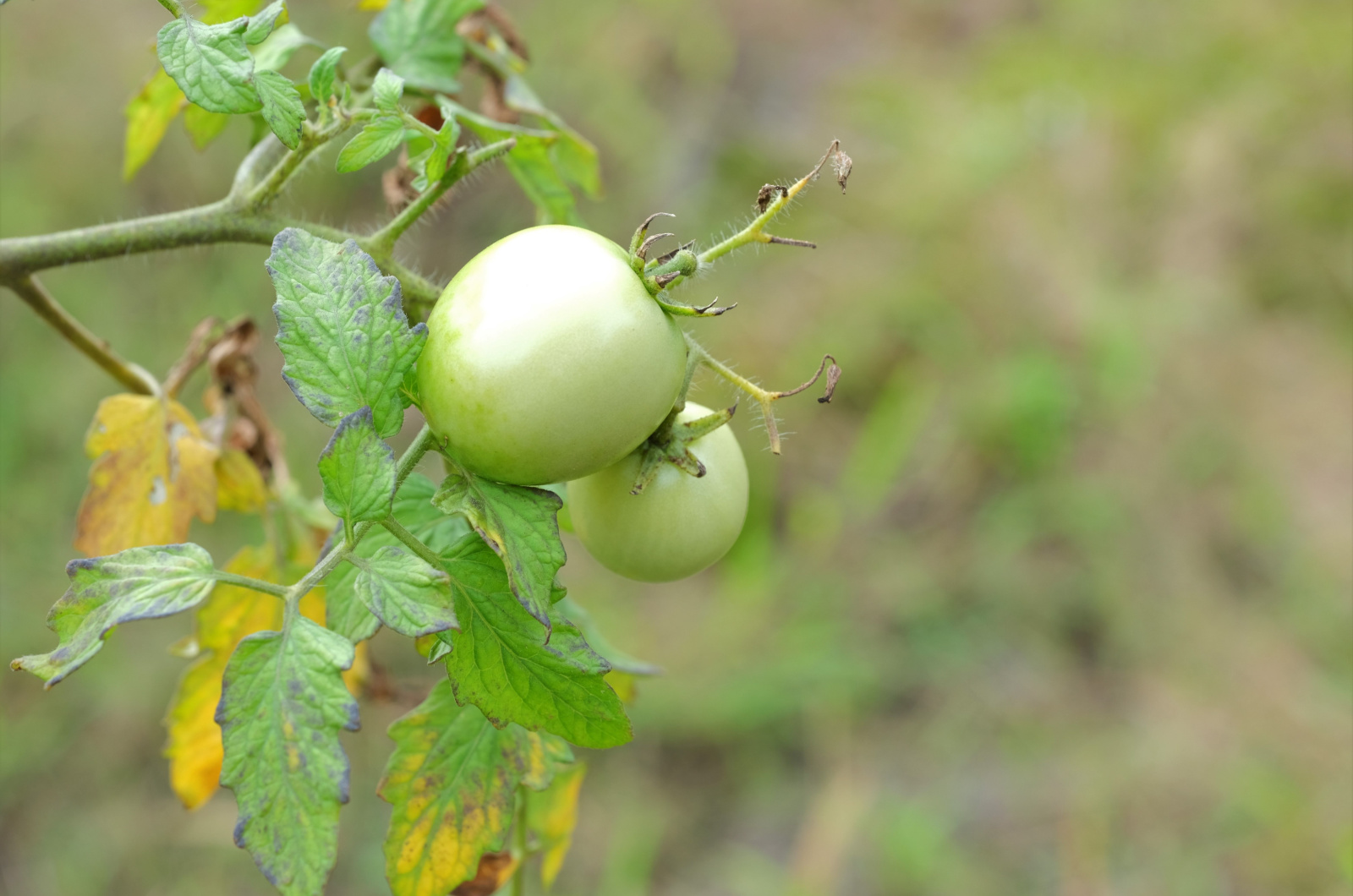Growing tomato plants is a rewarding journey, but it doesn’t come without challenges. It’s important to water your plants properly, ensure that they receive enough sunlight, and protect them from pests and diseases.
So, when your tomato plant starts producing brown leaves, that is a sign that there’s something wrong with it. It’s important to get to the bottom of the issue and figure out what is bothering your plant.
Then, you should find the ideal solution to nurture your plant back to health. So, by getting to the root of the issue, you’ll be ready to take action and keep your tomato plants thriving!
In this article, we are going to cover possible reasons why your tomato plant leaves are turning brown.
Let’s dive in!
Possible Causes
The most common causes of leaves browning are plant diseases, pest infestation, and dehydration. Read each section carefully to figure out what’s happening with your tomatoes.
1. Plant Diseases
Summer plant diseases can cause so much trouble. Not only do they ruin the infected plant, but they also easily spread to other plants in the garden, thus leaving you with a bunch of diseased plants that can’t produce delicious crops.
A fungal infection that often affects tomato plants is early blight. This fungus thrives in wet conditions and it usually appears from last season’s leaf litter – this is why it is important to always clean your garden beds at the end of the season.
Early blight causes a brown concentric circle on the plant’s leaves, which is how you can distinguish this disease. However, there’s one similar disease called Septoria leaf spot, though this one has darker brown spots with light centers.
If you overwater your tomatoes, you will probably end up with Fusarium wilt. This causes your plant’s leaves to turn yellow and brown.
The worst disease is definitely Southern blight. This disease turns lower branches dark brown. It easily spreads to the entire plant and completely destroys it.
You should also be on the lookout for bacterial canker, which is a bacterial disease that causes the leaf edges to turn brown and crispy.
When dealing with these diseases, it’s best to remove any affected parts of the plant in order to prevent spreading the disease. You can also use different fungicides, or you can go for the organic option and use neem oil instead.
Avoid overwatering your tomatoes by giving them just enough water. Make sure that the airflow is adequate because fungi thrive in moist conditions.
2. Dehydration
If you don’t water your tomatoes properly, their leaves will turn brown and crunchy. Wilted leaves are the first signs that your plants need water, so make sure to water them before they turn brown.
Brown leaves should be removed because they won’t turn green when you water your plant.
All you need to do is fix your watering – it’s best to give your tomatoes about an inch of water once a week. However, this depends on the weather conditions in your area. By watering your plants properly, you will end up with the sweetest tomatoes!
3. Pests
Pesky pests are every gardener’s nightmare. Unfortunately, tomato plants are prone to many pests, including spider mites, tomato hornworm eggs, and aphids.
Spider mites suck the sap of your tomato plants and they usually leave webbing on the leaves, so you can distinguish them easily. In case of a minor infestation, you can wash them off or treat them with insecticidal soap.
In case of a severe infestation where leaves start to droop and turn yellow, use neem oil or pesticides.
Same thing goes for aphids. They leave sticky honeydew on your plants, which is how you can detect them. To get rid of these annoyances you could introduce predatory insects such as ladybugs.
Tomato hornworm eggs are usually found in tomatoes. Later on, their larvae feed on the plant’s leaves. As they grow, they can cause serious damage to your plants.
To get rid of these, you should attract beneficial insects like wasps. To do this, consider planting some tomato companion plants nearby.
Make sure that your tomatoes get plenty of sunlight. Water them when needed, and also add some fertilizers to boost their growth and production.



